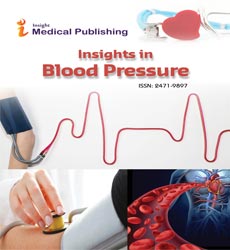Abstract
Control of Hypertension at the Diabetic Outpatient Clinic of a National Referral Hospital, Uganda: A Cross Sectional Study
Background: Non-Communicable Diseases (NCD’s) are globally becoming an epidemiological crisis because their burden continues to rise although they disproportionately affect the developing world especially the sub-Sahara African region. NCD’s are the leading cause of deaths and disability worldwide where about 46% of deaths in sub- Saharan Africa may be attributed to NCD’s by 2030. Hypertension (HT) and Diabetes Mellitus (DM) are the NCD’s of particular concern whose coexistence is a major contributor to the development and progression of macrovascular and microvascular complications.
HT is prevalent in 20%-60% of diabetics but conversely about 15% of hypertensive patients have concomitant diabetes and have an increased risk of developing diabetes than non-hypertensives, independent of any specific treatment. Hypertension is a major risk factor for mortality and CVD with 75% of cardiovascular disease in diabetic patients attributed to hypertension. Cardiovascular Disease (CVD) especially stroke accounts for almost 80% of deaths in diabetics but three-quarters of these occur in sub-Saharan Africa. Hypertension is among the most prevalent, modifiable cardiac risk factors for macrovascular disease in diabetic adults and therefore represents the most preventable cause of morbidity and premature mortality. Blood pressure control improves patient outcomes and reduces health care costs but is difficult within diabetics.
We aimed to estimate the prevalence of hypertension, explore hypertension control and investigate factors associated with poor hypertension control among patients attending the diabetic outpatient clinic at the national referral hospital in Uganda.
Methods: A cross-sectional study was conducted among 319 adult consenting patients attending the diabetic clinic of Mulago National Referral Hospital in Uganda between august and october 2018. Data was collected through interviewer administered questions using a standard pre tested questionnaire by trained staff.
Bivariate and multivariate logistic regression was performed to explore the association between factors and control of hypertension. The level of statistical significance was set at 95% confidence interval.
Results: Prevalence of hypertension noted was 88.09%, 25.27% were newly diagnosed with hypertension at the time of study data collection. Among those previously diagnosed/aware of their hypertension status, 130/210 (61.90%) were on hypertension treatment, 82% had their HT well controlled; 127 (60.48%) were on ACE and/or ARB. TG was independently associated with hypertension control in the multivariate analysis model (P=0.048).
Author(s): Mutebi Edrisa, Birabwa Sserwanga Esther*, Nakwagala Fredrick, Muddu Martin, Bagasha Peace, Agaba Gideon and Kiggundu Daniel3
Abstract | Full-Text | PDF
Share this

Google scholar citation report
Citations : 71
Insights in Blood Pressure received 71 citations as per google scholar report
Abstracted/Indexed in
- Google Scholar
- China National Knowledge Infrastructure (CNKI)
- Directory of Research Journal Indexing (DRJI)
- WorldCat
- Secret Search Engine Labs
Open Access Journals
- Aquaculture & Veterinary Science
- Chemistry & Chemical Sciences
- Clinical Sciences
- Engineering
- General Science
- Genetics & Molecular Biology
- Health Care & Nursing
- Immunology & Microbiology
- Materials Science
- Mathematics & Physics
- Medical Sciences
- Neurology & Psychiatry
- Oncology & Cancer Science
- Pharmaceutical Sciences
